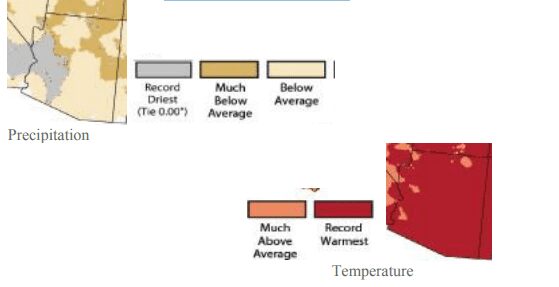1. Governor’s Water Proposals Don’t Protect Rivers
Governor Ducey’s staff has been hosting meetings on Arizona’s water future behind closed doors at invitation-only meetings and without public involvement or scrutiny. Water is too important to leave to a select group of special interests.
The Governor’s inappropriate process is just part of the story, however. Recently, the Arizona Department of Water Resources (ADWR) released an overview of the Governor’s Water Solutions Conversation. These potential “solutions,” came out of the closed-door workgroups and focus on two issues – protecting Arizona’s Colorado Riverallocation and reforming existing groundwater laws.

While some aspects of what was released may provide marginal benefits, the proposals fail to even mention the vast majority of Arizona rivers, many of which have already been dried up and diverted. Our remaining flowing rivers are at significant risk, especially in places such as the Upper Verde and Lower San Pedro.
Please stay tuned and prepare to take action as these proposals move forward in the Arizona Legislature. For more information, contact Sandy Bahr at (602) 253-8633 or [email protected].
2. Climas Past and Present. Precipitation & Temperature: November precipitation was below average across most of Arizona, with record-dry conditions in the western third of the state.

November temperatures broke record highs across nearly all of Arizona. Thus far, December has continued the trend of above-average to near-record temperatures and very dry conditions, although at the time of this writing, a series of storms had brought welcome precipitation to the Southwest. Year-to-date precipitation ranges widely from much-below average in southeastern Arizona.
Snowpack & Water Supply: Snowpack and snow water equivalent (SWE) are below average across the Southwest. The ongoing La Niña event – and its associated warmer and drier conditions in the Southwest – has potential implications for drought and water resource management over the winter season

ENSO & La Niña: After a relatively late start, La Niña has ramped up in terms of observed conditions and projected intensity, and current forecasts suggest a weak-to-moderate La Niña event lasting through winter 2018. Weak La Niña events tend to produce drier-than-average winters, but moderate events have resulted in more consistently dry conditions over the winter season.
Precipitation & Temperature Forecast: The three-month outlook for January through March calls for increased chances of below-average precipitation for all of Arizona, and increased chances of above-average temperatures for the entire southwestern United States.

3. What Are Your Top Resolutions For 2018? Here are just a few Oddly enough, they are the same as they were 20 years ago.



